Connecting in the Classroom
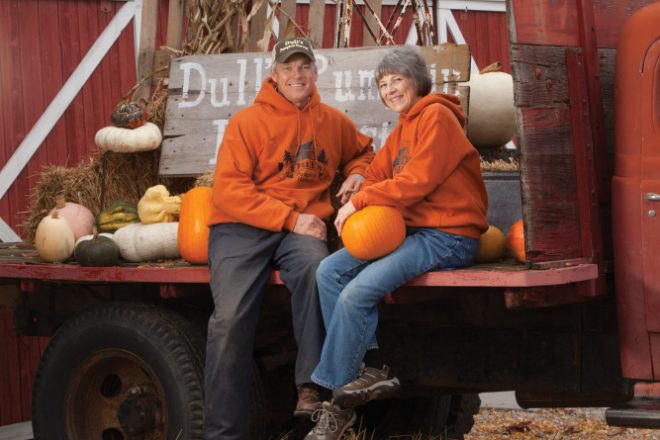
School field trips to Kerry Dull’s family farm this fall will yield pumpkins, memorable experiences and bushels of agricultural knowledge.
“Some of the comments I noticed from teachers and parents is that they thought they were going to have a fun trip on the farm but didn’t realize they were going to learn so much,” says Dull, who owns and operates Dull’s Tree Farm & Pumpkin Patch with her family in rural Thorntown, northwest of Indianapolis. “We are continually amazed at the disconnect between our general public and agriculture. They often don’t realize where their food comes from and also where other products come from.”
More than 100 active volunteers like Dull are scattered across Indiana and deliver standards-based agricultural lessons to schools through the Agriculture in the Classroom program, a national program that is coordinated in Indiana by the Indiana Farm Bureau. Just like a field trip to the Dull family farm, the program cleverly introduces fun ways to learn about agriculture. Students across Indiana use Agriculture in the Classroom materials to turn whipping cream into butter. They learn how to make biodegradable plastic with corn starch. They experience animal life cycles while hatching chicks. The educational opportunities with agriculture run the gamut.
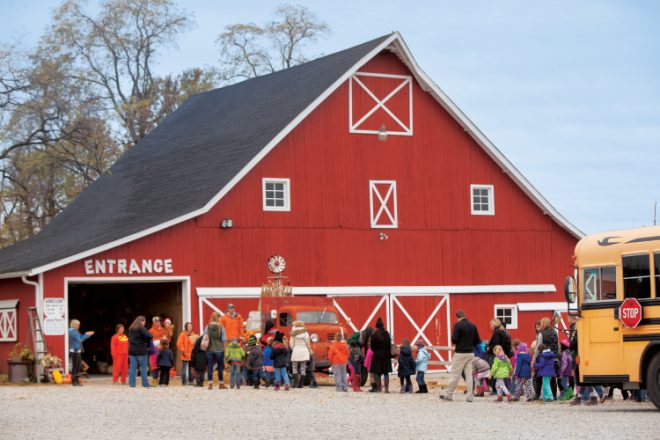
Through all of Indiana Agriculture in the Classroom’s efforts, students gain a greater awareness of the role of agriculture in the economy and society, says Julie Taylor, program coordinator. As a result, they are more likely to become citizens who support wise agricultural policies, and it all starts with using agriculture as an avenue to meet educational standards.
“The whole idea behind Ag in the Classroom is not to teach an additional subject, but to introduce agriculture into their everyday curriculum,” Taylor says. “If they are doing math, their problem may be about going to Tractor Supply and purchasing feed for animals or calculating how many bushels per acre a farmer may be producing.”
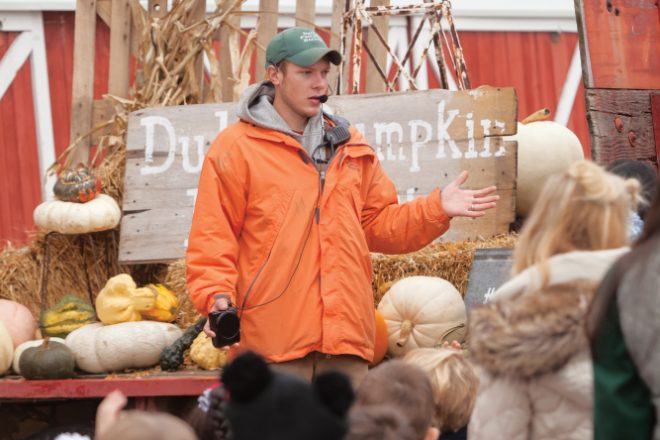
Yielding Results
In 2015, Agriculture in the Classroom reached nearly 65,000 Indiana preschool through 12th-grade students who learned about agriculture through lessons, activities and field trips. Taylor says the program provides teachers with free educational materials that commonly meet science, math and literacy standards, as well as some standards in social studies, geography, health and nutrition.
“Just by adding different elements to a presentation or a lesson, you can be cross-curricular and hit multiple standards,” she says.
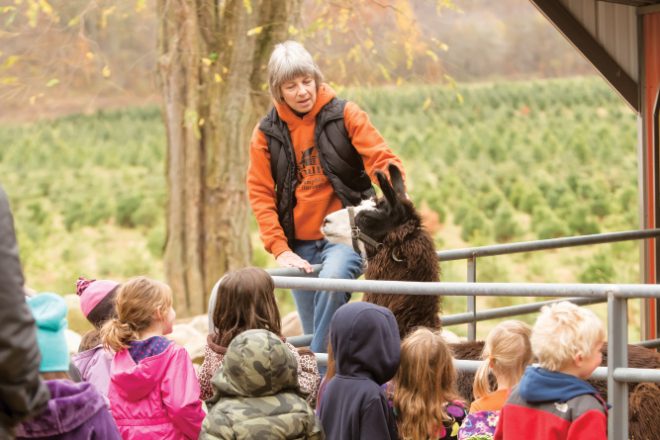
More than 1,500 students from 15 schools visit Dull’s Tree Farm every year from October to December. The earlier field trips focus on pumpkins, corn and soybeans. The trips after Thanksgiving center on Christmas trees. Dull’s diversified farm includes 1,900 acres of traditional row crops of corn and soybeans, as well as Christmas trees and wreaths, pumpkins, a gift shop, and a bed-and-breakfast among a mix of historical farm buildings from the 1800s.
Dull, a licensed family and consumer sciences teacher, started to volunteer for Agriculture in the Classroom years ago. At the time, she took her farm experiences and agricultural lessons to classrooms at local schools. She and her family soon made their farm the classroom. In 2015, Indiana Farm Bureau named Dull the program’s Volunteer of the Year.
“Kerry reaches thousands of kids on her farm every single year,” Taylor says. “Her passion for education and knowledge for understanding what it takes to put on a good program is one reason she is so successful in what she does. That field trip meets multiple educational standards.”
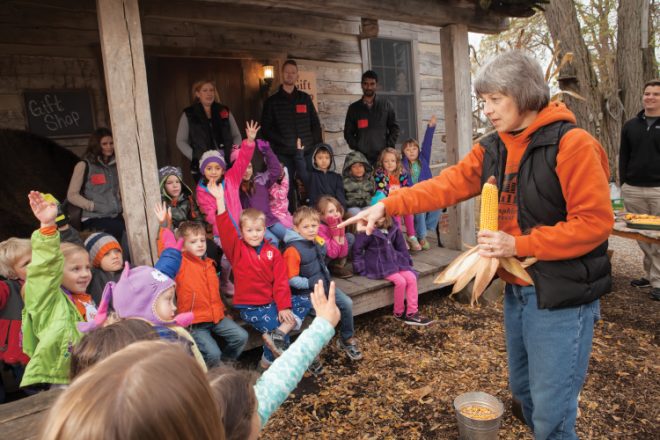
Agriculture Incorporates into Curriculum
First-grade teacher Cindy Hume works agriculture into her curriculum whenever she can. That task comes naturally, as she is a farm girl and the daughter of a volunteer agricultural educator.
“We live in a rural farming community, but so very few of our students these days are actually farm kids,” says Hume, who teaches at Granville Wells Elementary in Jamestown. “Many of them don’t realize those tractors going up and down the road while they are on the playground are responsible for much of what we eat. I’m helping them to make that connection.”
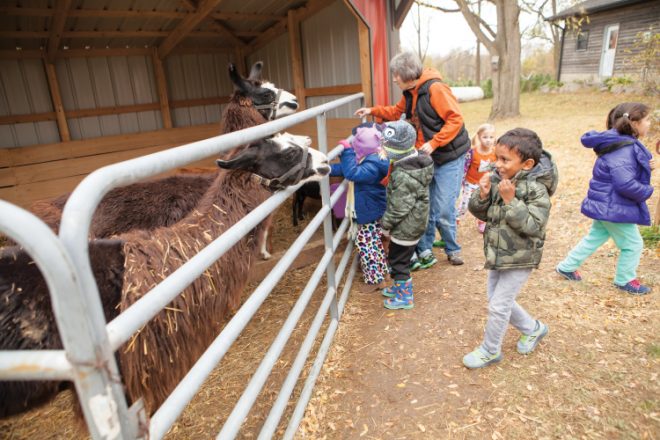
Agriculture in the Classroom intends to make incorporating agriculture into school curriculums an easy one for all grades levels, particularly grades K through 5. Materials constantly evolve to meet national learning standards while offering a relevant education on Indiana’s commodities, such as corn, soybeans, pork, dairy and pumpkins. At Dull’s Tree Farm, Hume’s first-graders broadened their definition of farming to include trees.
“I think the biggest takeaway for them is the fact that agriculture can mean more than corn and soybeans, our local main crops,” Hume says. “If you are growing something that other people need, whether food, fiber or Christmas trees, you are connected to agriculture.”




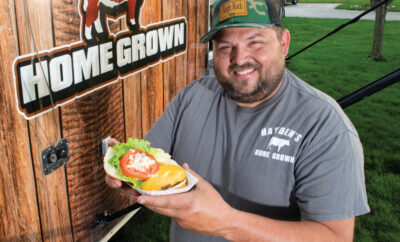








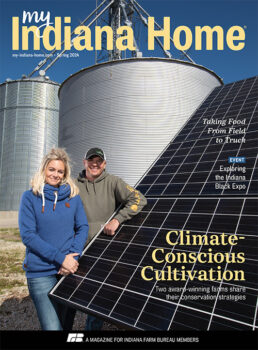 My Indiana Home is produced for Indiana Farm Bureau members. Our mission is to connect you with the food you eat, the Indiana farmers who grow it and a rural lifestyle that is uniquely Hoosier.
My Indiana Home is produced for Indiana Farm Bureau members. Our mission is to connect you with the food you eat, the Indiana farmers who grow it and a rural lifestyle that is uniquely Hoosier.
R.L.Sandlin
August 26, 2016 at 1:28 pm
Is there anything like this in Huntington, Wabash or Wells counties? thanks.